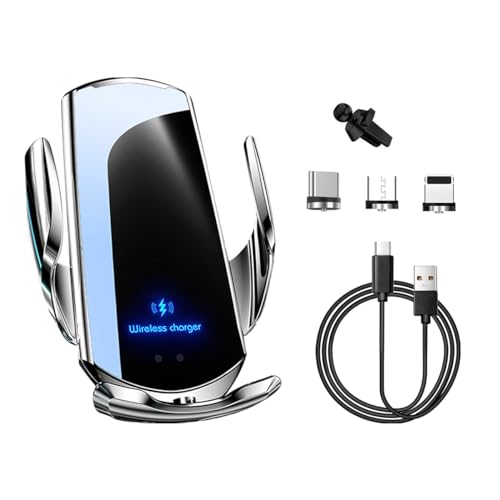This just in, photo taken Christmas Eve 2023. Despite my physical infirmities, I was pleased to discover how easily this component was removed and examined. I had no banana for scale, but I suspect that aspect is unimportant.
Not so pleasant is the discovery of moisture/coolant on the body. This explains the gradual depletion of the G48 coolant in the reservoir.
Based on my research here and elsewhere, it's likely related to the turbine-like whine heard from the motor when applying power at any speed, rather than the noise maker for pedestrians heard at slower rates of travel.
This particular photo resembles rather precisely the others I've discovered on the forum and internet resources, but not quite as bad as the severely rust-encrusted versions.
The question at hand is this:
For how many miles can I expect to use this vehicle without performing any service or repair? As a corollary, in what form will impending doom appear? Will the motor seize up and lock the wheels or will it begin to sound like a Cuisinart™ far enough in advance to get it home safely?
I ask this because our fleet of two 2013 Rav4EVs, each with a tad more than forty thousand miles / sixty-four thousand kilometers will by necessity become a fleet of one in six months time. My wife will no longer need to use this vehicle and the plan was to sell it. The amended plan is to drive it as long as possible, ideally up to the six month break point. The last twelve months of this heavier-used vehicle encompassed 3200 miles / 5100 kilometers. One can extrapolate that we therefore require half that for the next six months as the use is consistent and uniform.
It is realistic to expect that the motor will continue to (figuratively) grind away for that long? Is it time or distance or both? Velocity equals time multiplied by distance, but I don't think that formula applies here.
I'm self-(un)employed and can schedule clients around vehicular emergencies as needed, which means that a system failure during my wife's trip to or from work is of minimal impact, other than to marital harmony. You should have seen the smoke from her ears when her 2002 Rav4EV gave up the turtle and stranded her on the side of the road. I've convinced her that she won't be left in the dust this time around, but I'd prefer to have the communal backing on that possible-bluff. If the worst happens, I become chauffeur service up to the six month calendar break. That would double the two thousand mile / three thousand kilometer tally on my vehicle for at least half a year, but we'd still be saving on motor vehicle insurance and a partial registration rebate.
As you can see from the above diatribe, we have decided that the expense of a motor rebuild can't be justified in relation to the desired future use. I'm not sure where to ship a Florida based Rav4EV for such a repair, but the round trip expenses for shipping alone disqualifies the concept.

Not so pleasant is the discovery of moisture/coolant on the body. This explains the gradual depletion of the G48 coolant in the reservoir.
Based on my research here and elsewhere, it's likely related to the turbine-like whine heard from the motor when applying power at any speed, rather than the noise maker for pedestrians heard at slower rates of travel.
This particular photo resembles rather precisely the others I've discovered on the forum and internet resources, but not quite as bad as the severely rust-encrusted versions.
The question at hand is this:
For how many miles can I expect to use this vehicle without performing any service or repair? As a corollary, in what form will impending doom appear? Will the motor seize up and lock the wheels or will it begin to sound like a Cuisinart™ far enough in advance to get it home safely?
I ask this because our fleet of two 2013 Rav4EVs, each with a tad more than forty thousand miles / sixty-four thousand kilometers will by necessity become a fleet of one in six months time. My wife will no longer need to use this vehicle and the plan was to sell it. The amended plan is to drive it as long as possible, ideally up to the six month break point. The last twelve months of this heavier-used vehicle encompassed 3200 miles / 5100 kilometers. One can extrapolate that we therefore require half that for the next six months as the use is consistent and uniform.
It is realistic to expect that the motor will continue to (figuratively) grind away for that long? Is it time or distance or both? Velocity equals time multiplied by distance, but I don't think that formula applies here.
I'm self-(un)employed and can schedule clients around vehicular emergencies as needed, which means that a system failure during my wife's trip to or from work is of minimal impact, other than to marital harmony. You should have seen the smoke from her ears when her 2002 Rav4EV gave up the turtle and stranded her on the side of the road. I've convinced her that she won't be left in the dust this time around, but I'd prefer to have the communal backing on that possible-bluff. If the worst happens, I become chauffeur service up to the six month calendar break. That would double the two thousand mile / three thousand kilometer tally on my vehicle for at least half a year, but we'd still be saving on motor vehicle insurance and a partial registration rebate.
As you can see from the above diatribe, we have decided that the expense of a motor rebuild can't be justified in relation to the desired future use. I'm not sure where to ship a Florida based Rav4EV for such a repair, but the round trip expenses for shipping alone disqualifies the concept.

























